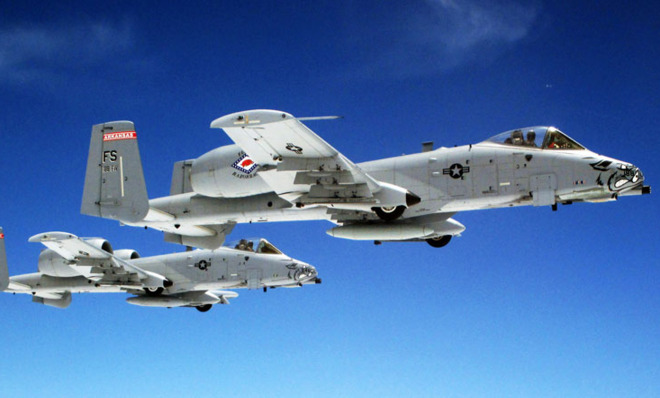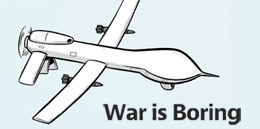Just how much does the U.S. Air Force spy on China?
Redacted docs offer some clues


China spies on America — or harasses it, at least — to the best of Beijing's limited ability. And America definitely spies on China. But just how much?
Most U.S. intelligence activities are deeply classified, but thanks to some redacted official documents, we have at least a basic sense of the American aerial surveillance campaign targeting the People's Republic of China.
To sum it up — America spies on China lots.
The Week
Escape your echo chamber. Get the facts behind the news, plus analysis from multiple perspectives.

Sign up for The Week's Free Newsletters
From our morning news briefing to a weekly Good News Newsletter, get the best of The Week delivered directly to your inbox.
From our morning news briefing to a weekly Good News Newsletter, get the best of The Week delivered directly to your inbox.
By way of the Freedom of Information Act, War is Boring obtained U.S. Air Force Air Combat Command's official history for 2010. The history includes separate chapters devoted to each of the flying branch's large spy planes.
These include 33 high-flying, camera-equipped U-2 Dragon Ladies; 17 radio-eavesdropping RC-135V/W Rivet Joints; two RC-135U Combat Sents for cataloging enemy radar sites; and three RC-135S Cobra Balls for snooping on ballistic missile launches.
The Air Force also possesses 20 RQ-4 Global Hawk and another 20 or so RQ-170 Sentinel reconnaissance drones in addition to dozens of spy satellites. But for this story we're focusing only on the manned spy planes. Besides, in 2010 the RQ-170s seem to have been busy in Afghanistan, preparing for the May 2011 raid on terrorist leader Osama Bin Laden's compound in Pakistan.
The information we obtained is most comprehensive for the two Combat Sents, which like all RC-135s are 1960s-vintage Boeing 707 airliners modified with special sensors.
A free daily email with the biggest news stories of the day – and the best features from TheWeek.com
"The RC-135U Combat Sent provides strategic electronic reconnaissance information to the president, secretary of defense, Department of Defense leaders, and theater commanders," according to the Air Force. "Locating and identifying foreign military land, naval and airborne radar signals, the Combat Sent collects and minutely examines each system, providing strategic analysis for warfighters."
If China builds a new radar — and yes, China is building lots of new radars — it takes a Combat Sent or similar system to pinpoint it, determine its capabilities, and help figure out how to avoid, suppress, or destroy it.
In 2010, the Air Force sent the Combat Sents to the Pacific from June to September. The official history does not specify where in Asia the RC-135Us were situated, but candidate airfields include Kadena in Japan and Andersen Air Force Base in Guam. Kadena is closest to China and seems a far more likely spy base. Andersen is mostly for bombers.
In three months, the Combat Sents flew 34 missions. Thirty-five were planned but one was aborted, probably for mechanical reasons. Despite their advanced age, the four-engine RC-135s are very reliable — just not perfectly so.
Of the 34 missions, 18 were "Diamond Sent" flights over the East China Sea bordering China's industrial heartland. Three were "Sapphire Sent" missions over the South China Sea, where China concentrates some of its heaviest forces for a possible attack on Taiwan.
Eight "Cheyenne Sent" patrols — one was cancelled — covered the Sea of Japan between China and Japan, America's main ally in the region. The balance of the RC-135Us' 2010 missions — just five flights — spied on North Korea.
The information regarding the three RC-135S Cobra Balls — optimized to "collect optical and electronic data on ballistic [missile] targets," according to the Air Force — is fairly comprehensive in the 2010 official history, even after redaction.
That year, Cobra Balls deployed to Diego Garcia in the Indian Ocean between June 23 to July 16 in order to spy on Chinese missile launches. China is fielding a huge missile force — thousands strong — in order to threaten Taiwan and also to deter U.S. Navy ships in the Pacific and American airfields in the region.
Following the summer tour, the Cobra Balls staged to Kadena Air Force Base in Japan from Nov. 2 to 7 and again from Nov. 27 to Dec. 29 to continue watching over Beijing's rocket tests.
Information on the RC-135V/Ws and U-2s in the official history is mostly blacked out, but the document does list the Rivet Joints' deployments to Kadena, from where the big spy planes could spy on China. A single RC-135V/W deployed to the Western Pacific between late January and late March.
Following that, one operational Rivet Joint was in Japan from early April to late May; another arrived in early June and stayed through late July; one staged from Kadena from early August to late September; and the final Pacific RC-135V/W deployment of 2010 began in October.
Basically, one Rivet Joint was in in Japan for spy flights near China pretty much year-round in 2010.
Data on the 1950s-vintage U-2s is more cursory. Flying higher and for longer than other manned planes, the Dragon Ladies use powerful cameras to photograph military facilities — much like satellites do. In 2010, three U-2s were in South Korea at all times for patrols near North Korea. It seems a single U-2 dropped in on Kadena from mid-June to mid-July to spy on China.
Bottom line: The Air Force spies intensively on China, using a large fleet of sophisticated manned spy planes — at least one of which is based near Chinese territory any given day of the year.
From drones to AKs, high technology to low politics, War is Boring explores how and why we fight above, on, and below an angry world. Sign up for its daily email update here or subscribe to its RSS Feed here.
More from War is Boring...
-
 Political cartoons for December 21
Political cartoons for December 21Cartoons Sunday’s political cartoons include Christmas movies, AI sermons, and more
-
 A luxury walking tour in Western Australia
A luxury walking tour in Western AustraliaThe Week Recommends Walk through an ‘ancient forest’ and listen to the ‘gentle hushing’ of the upper canopy
-
 What Nick Fuentes and the Groypers want
What Nick Fuentes and the Groypers wantThe Explainer White supremacism has a new face in the US: a clean-cut 27-year-old with a vast social media following